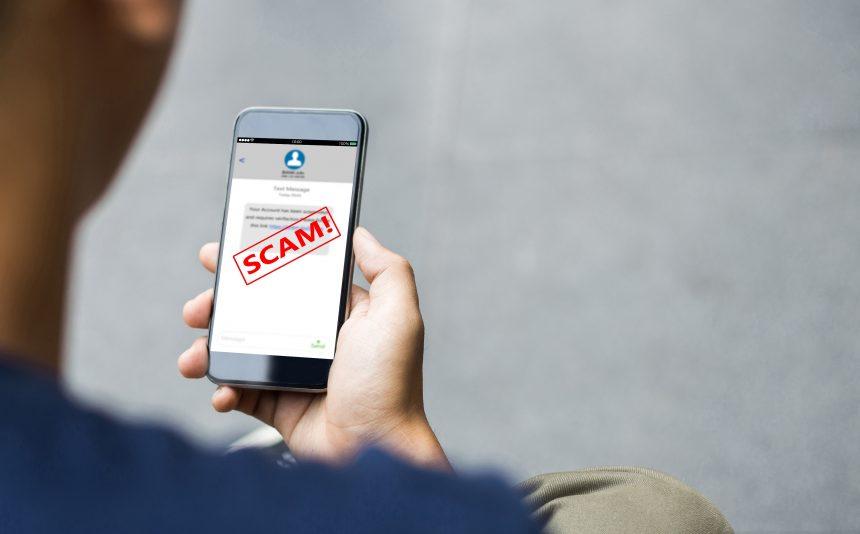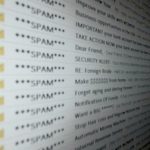The “Document Shared Securely” spam email campaign has become a prominent phishing tactic targeting unsuspecting users. Despite its seemingly legitimate appearance, this phishing scam has the potential to compromise sensitive information, financial accounts, and personal identities. This article provides a comprehensive overview of this threat, details on its nature, symptoms, and a step-by-step guide to remove the infection using SpyHunter. Additionally, preventive methods will be outlined to ensure that victims avoid falling for similar scams in the future.
Summary of the “Document Shared Securely” Spam Email Scam
| Category | Details |
|---|---|
| Threat Type | Phishing email scam |
| Encrypted File Extension | None (fake link leading to phishing page) |
| Associated Email Addresses | Various email addresses posing as legitimate services (e.g., Zoho) |
| Detection Names | Phishing, Fraud, Fraudulent Phishing Site |
| Symptoms of Infection | Identity theft, compromised login credentials, unauthorized transactions |
| Damage | Identity theft, financial loss, unauthorized purchases, exposure of sensitive data |
| Distribution Methods | Phishing email with fake links and fake login pages |
| Danger Level | High (can lead to severe privacy breaches and financial losses) |
Remove annoying malware threats like this one in seconds!
Scan Your Computer for Free with Spyhunter
Download Spyhunter now, and scan your computer for this and other cybersecurity threats for free now!
How the “Document Shared Securely” Email Scam Works
This phishing scam typically begins with an email titled “Access Your Secure Document” or similar variations. It often includes the branding of legitimate services, such as the old Zoho Office Suite logo, a popular online suite used for project management and other business-related tasks. The email content will appear to be a notification from a trusted source, telling the recipient that a secure document has been shared with them. The email will prompt the user to click a “Download Document” button to access the file.
However, the link in the email does not lead to a genuine document. Instead, it directs users to a phishing website disguised as Zoho’s verification page. This fraudulent page asks the user to enter their account login credentials, including usernames and passwords. Once entered, this information is captured by cybercriminals, giving them full access to the victim’s accounts.
This is a dangerous scam for several reasons. First, it can lead to the hijacking of business-related accounts, which may contain sensitive data, and the compromised account could be misused for various nefarious activities, including blackmail. Additionally, the attackers can spread malware, send fraudulent requests to the victim’s contacts, and even commit identity theft and financial fraud by accessing e-commerce, banking, and digital wallet accounts.
Signs You Have Fallen for the “Document Shared Securely” Scam
- Phishing website: You are redirected to a website that requests your login credentials. The page may appear similar to a legitimate service like Zoho, but upon closer inspection, the URL is likely to be suspicious.
- Unusual account activity: Once scammers have access to your accounts, they may use them for unauthorized transactions, sending malicious links to your contacts, or making fraudulent purchases.
- Emails from contacts: Your contacts might report receiving suspicious messages from your account, such as requests for donations or sharing links to phishing sites.
- Compromised personal data: Scammers may misuse stolen personal data to target you or your contacts with other scams or blackmail.
How to Remove the “Document Shared Securely” Phishing Infection
Remove annoying malware threats like this one in seconds!
Scan Your Computer for Free with Spyhunter
Download Spyhunter now, and scan your computer for this and other cybersecurity threats for free now!
If you believe you have been compromised by the “Document Shared Securely” phishing campaign, you must take immediate action to remove the infection and secure your data. Here is a step-by-step guide on how to use SpyHunter to remove this threat:
Install SpyHunter
Download and install SpyHunter. Ensure that you download it from a legitimate source to avoid further malware infections.
Update SpyHunter
Open SpyHunter and update its database to ensure it has the latest definitions for detecting and removing phishing threats, including this scam.
Run a Full System Scan
After installation and updating, initiate a full system scan. This will allow SpyHunter to detect any traces of the phishing website or any malware associated with the scam.
Review Detected Threats
Once the scan is complete, review the detected threats. SpyHunter will display a list of any compromised files or registry entries related to the phishing scam.
Remove Threats
Select all detected threats and click on “Remove” to eliminate them from your system. SpyHunter will delete the malicious files and clean up any associated registry entries.
Change Compromised Passwords
If you entered your credentials into the phishing website, immediately change the passwords for all potentially compromised accounts. This includes email accounts, banking apps, and social media platforms.
Enable Real-Time Protection
After removal, activate SpyHunter’s real-time protection to monitor and block any future phishing attempts or malware infections.
Preventive Measures to Avoid Falling for Phishing Scams
- Be cautious with unsolicited emails: Always be skeptical of unsolicited emails, especially those that contain links or attachments. Even if the email looks legitimate, check the sender’s email address and inspect any links before clicking.
- Verify links and URLs: If you receive an email urging you to click on a link, hover over it with your mouse to check if the URL matches the legitimate domain of the service being claimed. If it seems suspicious, do not click.
- Enable two-factor authentication: Whenever possible, enable two-factor authentication (2FA) on your important accounts. This adds an extra layer of security, even if your password is compromised.
- Regularly monitor accounts: Frequently review your bank and credit card statements, social media activity, and email accounts for any suspicious or unauthorized activities.
- Educate others: Share information about phishing scams with friends, family, and colleagues to help them avoid falling victim to similar threats.
- Use trusted security software: Always use reliable security software like SpyHunter to detect and prevent phishing attacks. Regular scans can help identify potential threats before they cause significant harm.
Conclusion
The “Document Shared Securely” phishing scam is a significant threat that can lead to identity theft, financial loss, and data breaches if left unchecked. By recognizing the signs of phishing attempts and following the steps provided in this article to remove the infection, users can protect themselves and their sensitive information. Additionally, implementing preventive measures such as enabling two-factor authentication and educating others will help safeguard against future phishing scams.
Remove annoying malware threats like this one in seconds!
Scan Your Computer for Free with Spyhunter
Download Spyhunter now, and scan your computer for this and other cybersecurity threats for free now!
Text Presented in the “Document Shared Securely” Spam Email Letter
Subject: Access Your Secure Document
Document Shared Securely
We are pleased to inform you that a secure document has been shared with you. Please use the link below to download the document:
Download Document
If you have any questions or need further assistance, please do not hesitate to contact us.
This email and any attachments are confidential and intended solely for the recipient. If you have received this message in error, please notify the sender and delete this email. Unauthorized use, disclosure, or distribution of this communication is prohibited.





